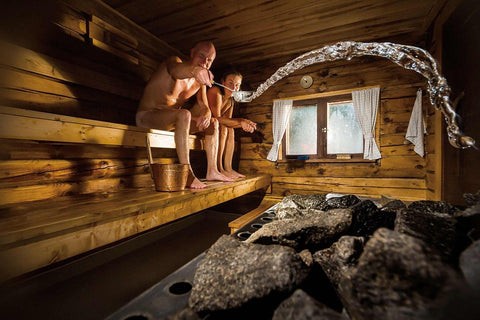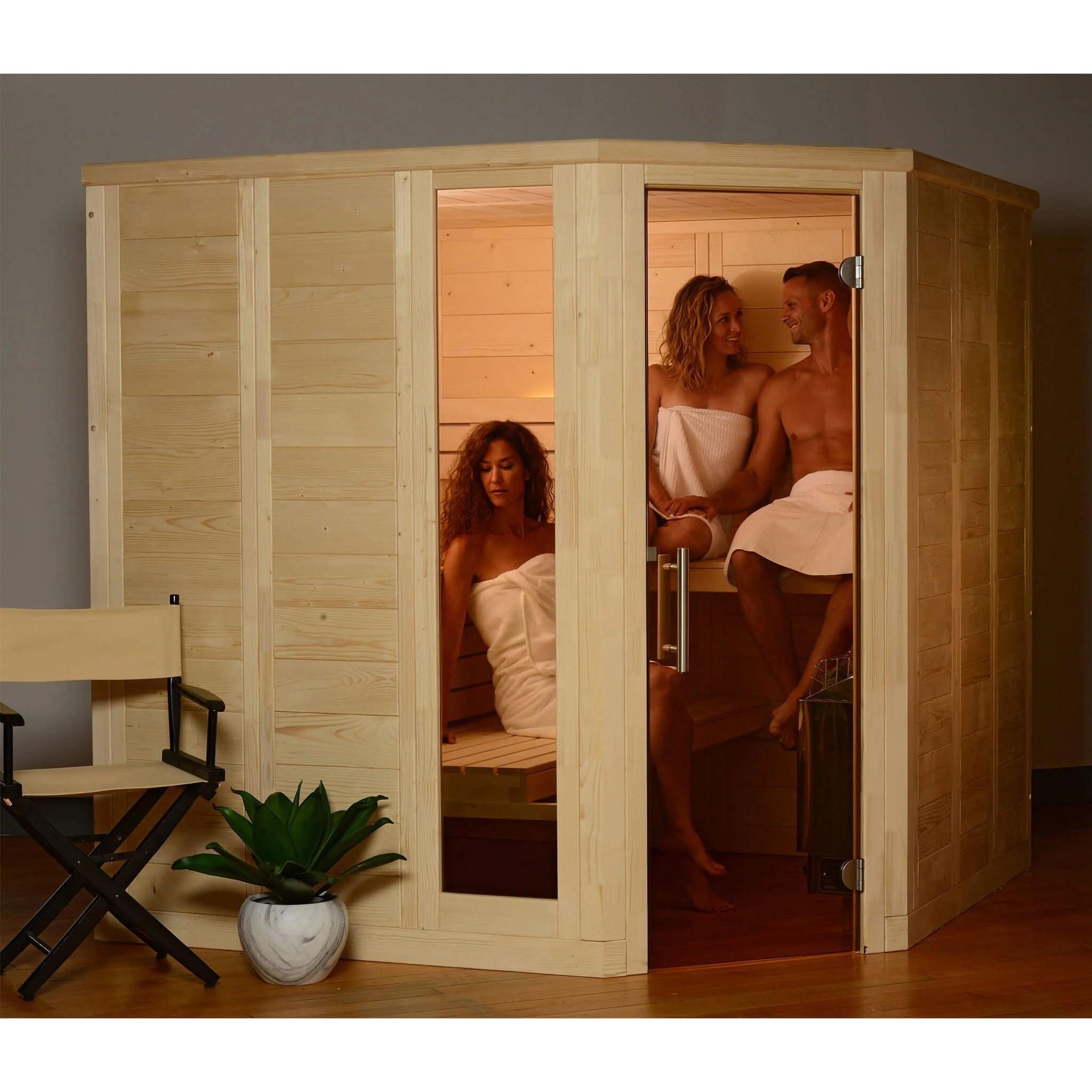10 Simple Techniques For Traditional Sauna
10 Simple Techniques For Traditional Sauna
Blog Article
Getting My Traditional Sauna To Work
Table of Contents4 Easy Facts About Traditional Sauna ExplainedTraditional Sauna Things To Know Before You BuyRumored Buzz on Traditional SaunaTraditional Sauna for DummiesSome Of Traditional Sauna
The majority of the weight shed in a sauna is water loss and is re-gained upon rehydrating. Without an uncertainty sauna can be an essential component of a healthy and balanced weight loss program. To look at the distinctions between conventional and IR saunas, I will certainly separate these into proven, academic, and produced distinctions.Therefore, the hottest factor in the saunawhich goes to the ceiling straight over the sauna heateris commonly between 185 and 190 F. Claims that a standard sauna surpasses 200 F is simply not real and not applicable for electric saunas offered in the United States. The temperature level for a far-infrared sauna is typically set between 120 and 140 F; nonetheless, unlike the traditional sauna, the goal in and IR room is not to accomplish a high temperature.
As a result of this, the temperature level distinction is nearly irrelevant, considering that extreme sweating results in both sauna types, yet the approach of heating the body is various. In an IR sauna the bather will feel warm and will sweat a lot, yet at much lower temperature levels (Traditional Sauna). Therefore, if the objective is to spend longer time periods in the sauna, the IR sauna is a great choice
When a typical sauna has actually been properly heated, the sauna walls are warm, the air temperature level has actually achieved established temperature level and the rocks are incredibly warmed. As an intriguing side note, the heated wall surfaces and the rocks are releasing far-infrared warmth, incorporated with the heated air, to create an "covering warmth".
Examine This Report on Traditional Sauna

When the heat is achieved, the elements cycle on and off to preserve the heat. Most traditional sauna customers appreciate putting water over the rocks to produce steam to increase sauna moisture levels. The advantages of putting water over the rocks include: making the space a lot more comfy, moistening the nasal passages, and permitting the usage of aromatherapy by mixing essential oils with the water.

When the power gets in the body, it causes the body temperature to boost and ultimately leads to perspiration. In an infrared sauna it's essential for the emitters/heaters to stay on nearly constantly. Considering that there is no mass of rocks to maintain warmth, the sauna will certainly cool down if the emitters closed off.
As mentioned above, the sauna bather in an infrared area wants to position himself before running emitters to get optimal benefit from the warm. The home heating time for both rooms can be really different, depending upon exactly how the areas are utilized. For a conventional sauna, a bather must enable 30-40 mins for the space to browse around this web-site attain a desired temperature and to effectively pre-heat the rocks.
Not known Factual Statements About Traditional Sauna
A well created sauna will commonly attain a temperature level of 150-160 F in concerning 30-40 mins. For hotter temperatures, the space may need to warmth for a longer duration.

Standard saunas have a tendency to be larger (therefore utilize more electrical power) than infrared saunas, although typical saunas are absolutely offered in one and two individual sizes too. For a two-person traditional sauna, 5x6 or 5x7 size is most preferred. The top bench can pleasantly seat two or 3 individuals and is also long sufficient to relax throughout the sauna session.
An Unbiased View of Traditional Sauna
The ordinary price per kWH of electrical power in the united state is about $0.11, so a 4.5 kW heater will certainly cost around $.50 to compete one hour, if the heating system runs continually for one hour. Normally a sauna heater will run for 75% of the very first hour and 50% of succeeding hours on given that the elements cycle once the established temperature level is attained.

There is a seldom discussed distinction in the social experience in between the 2 spaces. While our society has actually shed a few of the social advantage of the traditional sauna experience, it can be extremely socially rewarding (Traditional Sauna). From family members time in the sauna, to heart-felt conversations with loved ones, to sauna partiesthe typical sauna experience can result in intimate interacting socially
The 30-Second Trick For Traditional Sauna
A lot of check this site out greater end infrared rooms include tinted light treatment, sound systems and full-glass fronts.
Report this page